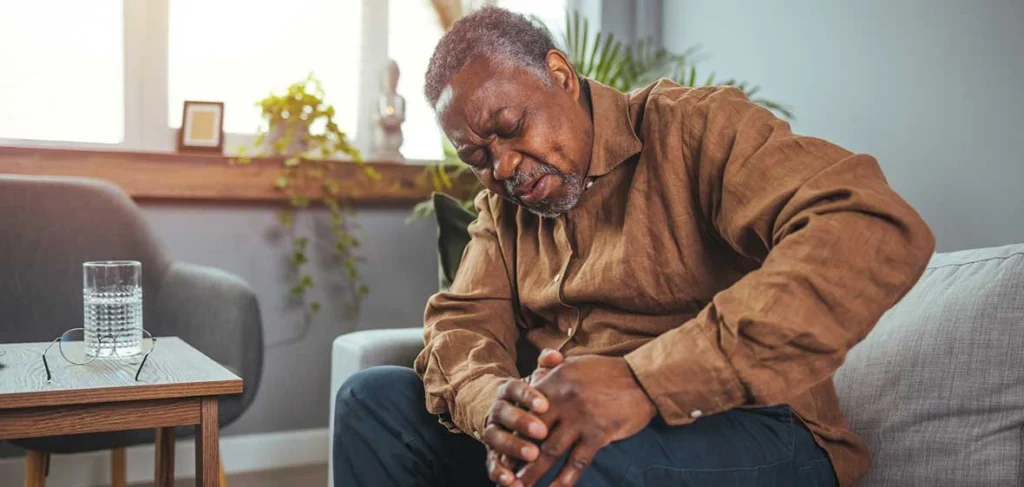Author's details
- Dr. Khashau Eleburuike
- MBBS (Ilorin) MSc. Global Health Karolinska Institute.
- Resident doctor in family medicine in Northern Sweden.
Reviewer's details
- Dr Abdulgafar Lekan Olawumi
- MBBS, MHE, MPH, FWACP, FMCFM.
- Department of Family Medicine, and Geriatric Centre of Aminu Kano Teaching Hospital Kano, Nigeria.

- Date Published: 2025-04-19
- Date Updated: 2025-04-19
Osteoporosis in Older Adults in Sub-Saharan Africa
Introduction
What is Osteoporosis?
Osteoporosis is a condition where bones become weak and brittle, making them more likely to break. It often develops slowly over years and is most common in older adults, especially postmenopausal women.
Osteoporosis is sometimes called the “silent disease” because people may not know they have it until a bone breaks.
Discussion
Common Signs and Symptoms
Osteoporosis may not show symptoms at first. However, signs can include:
- Frequent bone pains and tingling sensations
- Sudden bone fractures (especially in the hip, spine, or wrist)
- Loss of height
- Stooped posture or back pain
- Bones breaking from minor falls or bumps.
Why It Matters in Sub-Saharan Africa
- Osteoporosis is underdiagnosed and undertreated in the region.
- Limited awareness and few bones health services
- Nutritional deficiencies, especially low calcium and vitamin D
- Older people may not report falls or fractures
- Cultural beliefs may lead to misinterpretation of symptoms
- Mobility problems are major impediments of functionality in older people.
Risk Factors
- Age (especially over 60)
- Female sex, especially post-menopause
- Low calcium or vitamin D intake
- Physical inactivity
- Family history of fractures
- Smoking or excessive alcohol
- Long-term use of steroids
Chronic conditions like HIV, rheumatoid arthritis, or kidney disease
How is Osteoporosis Diagnosed?
In high-resource settings, osteoporosis is diagnosed using a bone mineral density scan (DEXA).
In Sub-Saharan Africa:
- Diagnosis may rely on history of low-impact fractures
- Clinical risk assessment and simple physical exams are helpful
- X-rays may show bone thinning or spine compression fractures
How to Prevent and Manage Osteoporosis
- Nutrition
- Eat foods rich in calcium (milk, sardines, crayfish, soft bones and cartilages, beans, green leafy vegetables)
- Get enough vitamin D from sunlight and foods like eggs and fish
- Avoid excessive alcohol and smoking
- Exercise
- Encourage weight-bearing activities (walking, dancing, light lifting)
- Help improve balance to prevent falls
- Medical Support
- Use vitamin D and calcium supplements if needed
- Some may benefit from medications (e.g., bisphosphonates—if available)
- Treat any underlying illnesses affecting bone health
- Ensure fall prevention at home (remove loose rugs, install handrails)
Support for the Elderly
- Encourage regular health checkups
- Watch for signs of bone pain or posture changes
- Assist with safe movement and walking aids
- Promote community education on bone health and ageing
Conclusion
Osteoporosis can lead to serious disability—but with early care, good nutrition, and physical activity, older adults can live strong, active lives.
References
- World Health Organization. (2007). WHO Scientific Group on the Assessment of Osteoporosis at Primary Health Care Level. https://www.who.int
- Leshabari, M. T., et al. (2020). Burden and prevention of osteoporosis in Africa: a review. Pan African Medical Journal, 37(1), 15.
- Kanis, J. A., et al. (2009). Osteoporosis in developing countries. Osteoporosis International, 20(11), 1905–1910.
- International Osteoporosis Foundation. (2023). Osteoporosis and Fragility Fractures in Africa. https://www.iofbonehealth.org
- Mupfeki, N., & Gomo, E. (2022). Bone health in ageing populations in sub-Saharan Africa. African Health Sciences, 22(3), 291–298.
